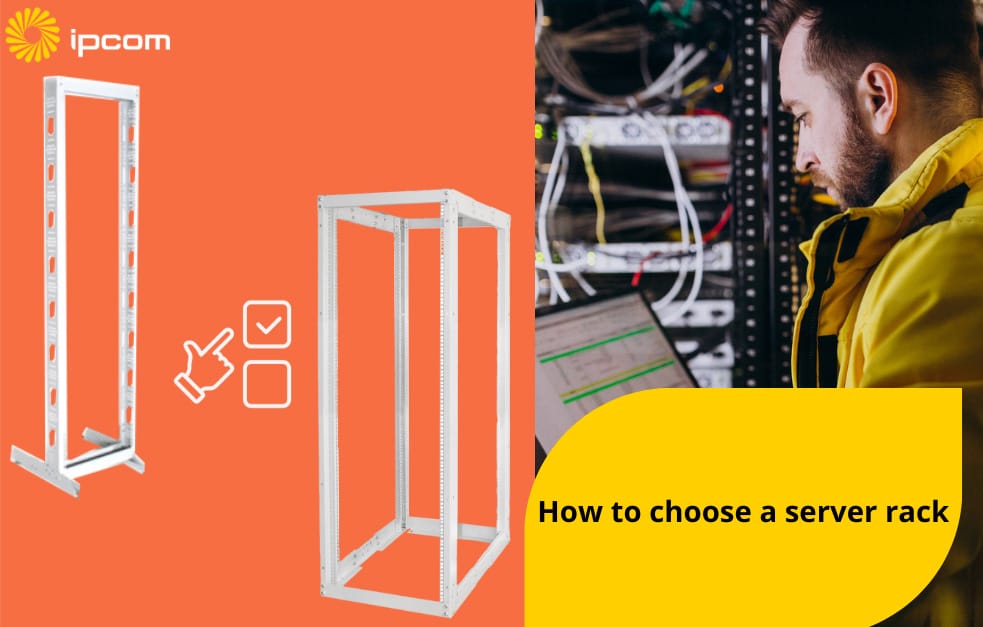As computing workloads and the density of active equipment continue to grow, the efficient use of rack space has become critically important. Open-frame server racks offer a practical solution for environments where natural convection, simplified access to networking and server components, and flexibility in cable management are key priorities. In this article, we will explain how to choose a server rack—focusing specifically on open-frame designs.
Open-Frame Server Racks: Definition and Types
An open-frame network rack is a purpose-built steel frame that features two or four vertical mounting rails equipped with pre-drilled holes for equipment installation. It is designed to accommodate telecommunications and IT equipment with a recognized 19″ form factor. Models for 10-inch equipment are less common.
There are two main types of these configurations: 2-post and 4-post. The fundamental distinctions between them are stability, load capacity, and cost.
Expert Tips to Help You Choose a Server Rack
When choosing an open frame server rack, you should take into account how much equipment is planned to be installed, what its weight is, how much space is available for the rack, and how convenient access to the equipment should be.
Let’s discuss all the nuances between the two popular types, based on these key factors.
Stability and Load Capacity
- 2-Post: They offer limited support for deeper or heavier equipment. They’re best suited for lightweight networking devices.
- 4-Post: These types offer increased stability and can support much heavier and deeper equipment. This makes them perfect for environments with full-sized servers, storage systems, or any gear that requires support on both front and back rails.
Recommendation: If your setup includes deep, heavy servers or multiple high-density units, opt for a 4-post rack.
Equipment Capacity
The total amount of equipment you can install also depends on the rack height, measured in U.
- 2-Post: Due to their structure, these models are generally suitable for fewer and lighter devices. They are most commonly used for patch panels, network switches, or small-scale telecom equipment.
- 4-Post: With four points of support, these types allow for denser configurations. They can accommodate multiple servers, UPS units, and deeper gear.
Recommendation: If you plan to install many devices and scale up, choose the 4-post option
Installation and Accessibility
- 2-post models offer excellent front and side access and are easier to install in tight spaces. However, cable management may require additional accessories.
- 4-post products provide convenient and unrestricted front and rear access to equipment. They also offer better cable routing options and improved airflow management.
Cost and Footprint
- A 2-post network rack is generally less expensive and requires less floor space.
- A 4-post open-frame server rack costs more but offers scalability, making it a better investment for a growing infrastructure.
Where to Consult and Order Open-Frame IT Racks
IPCOM-Group is a company long known in the telecommunications equipment market. We manufacture and supply wholesale a wide range of telecom equipment, including open-frame network racks. Our products are available for delivery to most countries worldwide.
Request a consultation with us, and we will help you select the optimal solution for your needs and provide detailed information about the ordering conditions.
Conclusion
If you’re asking yourself “How to Choose a Server Rack”, know that the choice of a specific rack depends on load requirements, equipment type, and the characteristics of your space. If stability and versatile equipment mounting are the priority, a 4-post configuration offers solid support. For lighter setups in limited spaces, a 2-post structure is a practical and cost-effective solution.



 info@ipcom-group.pl
info@ipcom-group.pl +48-57-35-69-079
+48-57-35-69-079
